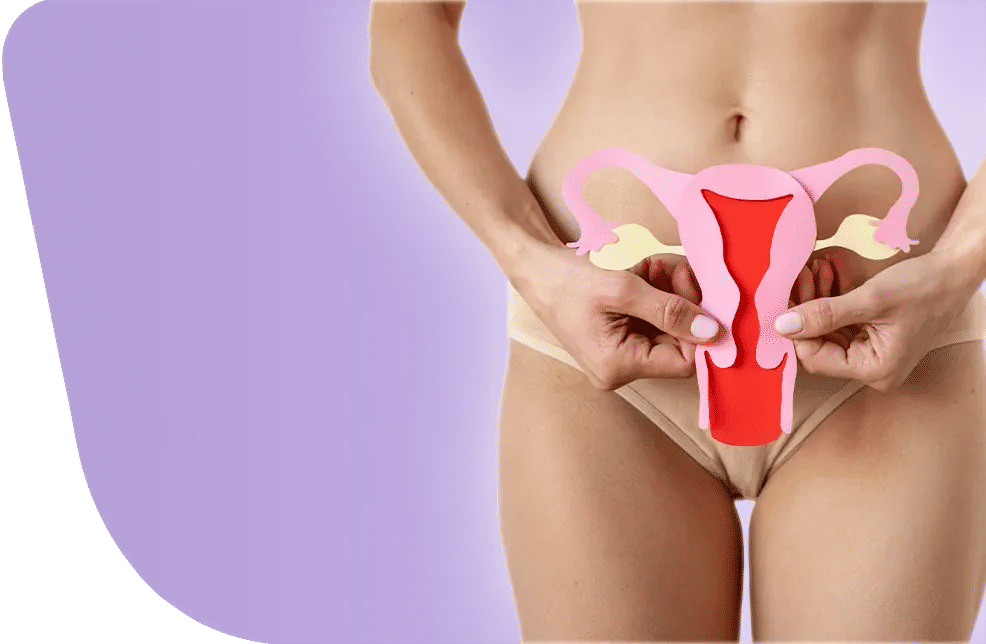- - TENS Units for Facelift
- - How to Use Tens Units for Facelift?
- - How to Use a TENS Unit Safely and Effectively on the Face?
- - Is the TENS Unit Machine Effective for a Facelift?
- - FAQs About How to Use TENS Unit for Facelift
A TENS (Transcutaneous Electrical Nerve Stimulation) unit can be used for facial toning and rejuvenation, but it is important to use devices specifically designed for facial use and follow safety precautions, as many TENS units are not intended for the face.
TENS Unit for Facial Toning at Home is used for a non-surgical facelift by using low-level electrical currents to stimulate facial muscles, which may lead to improved muscle tone, tighter skin, increased circulation, and a more youthful appearance.
TENS Units for Facelift
A TENS (Transcutaneous Electrical Nerve Stimulation) machine is traditionally used for pain relief by blocking pain signals or triggering endorphin release. Recently, TENS devices have been adapted for cosmetic use to provide a non-surgical facelift. These devices, often called EMS (Electrical Muscle Stimulation) machines, deliver low-level electrical currents directly to facial muscles. This helps tone facial muscles, lift the skin, improve blood circulation, and may promote collagen production, offering subtle facial tightening and a rejuvenated appearance.
How to Use Tens Units for Facelift?
To use a TENS unit for a non-surgical facelift, place the electrodes on the target facial muscles, ensuring they cover the bulk of each muscle. Connect the lead wires and turn on the device, gradually increasing the intensity until you feel gentle muscle contractions.
For the best results, use the TENS unit on clean, dry skin, position the electrodes on precise facial areas, and follow a consistent routine of 15–20 minutes per session, three to four times per week. This approach helps tone facial muscles effectively and enhances overall lifting and firming results.
Step-by-Step Guide: How to Use TENS Unit for Facelift
1. Choose the Right TENS Unit for a Facelift
Select a device specifically designed for facial use with small electrodes and programs targeting facial muscle stimulation. Look for adjustable intensity, multiple facial-focused modes, and a user-friendly design. Ensure the device is from a reputable brand and FDA-cleared for safety.
Tips for choosing the right TENS unit:
- Use a facial EMS machine designed for cosmetic use with low-intensity currents suitable for delicate facial muscles
- Avoid standard TENS units meant only for pain relief, as they may be too strong for facial skin
- Choose a device with a digital display, rechargeable battery, or compact design for easy handling
- Use high-quality, reusable electrodes that are small enough for the face and adhere well
- Ensure multiple pre-defined programs target different facial areas
2. Clean and Prepare Face for TENS Unit
To prepare your face for a TENS unit, start by thoroughly washing the skin with a gentle cleanser or mild soap to remove makeup, oil, and debris.
Rinse with lukewarm water and gently pat the face dry with a clean, lint-free cloth. Avoid applying moisturizers or oil-based products before treatment, as they can reduce conductivity.
For optimal results, apply a thin, even layer of conductive gel to the areas where the electrodes will be placed, or use pre-gelled pads according to the manufacturer’s instructions.
Ensuring your skin is clean and dry helps the electrodes adhere properly and allows the electrical current to penetrate effectively.
3. Placement of Electrodes
For a TENS facelift, place electrodes on specific facial muscles on both sides of the face, avoiding sensitive areas such as the eyes, lips, open wounds, or the neck. Ensure electrodes are symmetrical and spaced about 1–2 inches apart for even stimulation and comfort.
Common electrode placement areas for facial toning:
- Forehead: For brow elevation, place an electrode on the frontalis muscle
- Eye area: Use the orbicularis oculi area carefully for eyelid or eye-area stimulation, avoiding the eyes themselves
- Cheeks: Target the zygomaticus major and other cheek muscles
- Jawline: Place electrodes along the jawline to stimulate the relevant muscles
- Back of the ear: Place one electrode below the mastoid process and the other over the muscle belly being targeted
- General facelift effect: Just above the cheekbones, near the ears
4. Apply the TENS Unit
To use a TENS unit for a facelift, turn the device on and start at the lowest intensity. Gradually increase the intensity until you feel a gentle but noticeable muscle contraction or a comfortable tingling or buzzing sensation. If your device has specific facial programs, use them for targeted results.
Avoid increasing the intensity to the point of pain or uncomfortable muscle clenching. Once the optimal intensity is set, lock the unit to prevent accidental changes during the session. Typical sessions last 10–20 minutes, depending on your device.
5. Post-Session Care and Maintenance
After completing a TENS facelift session, turn off the device and carefully remove the electrodes from your face.
Gently wipe away any remaining conductive gel using a soft, damp cloth. Clean and store reusable electrodes according to the manufacturer’s instructions to maintain their quality. Avoid applying heavy creams, oils, or makeup immediately after the session to allow your skin to recover.
Check your skin for any irritation, redness, or sensitivity, and allow time to heal if needed. Additionally, clean your TENS unit and cables regularly to maintain hygiene and prolong the device’s lifespan.
6. Follow a Consistent Routine
To get the best results from a TENS facelift, follow your device’s recommended schedule. For facial toning, a typical routine is 20 minutes per session, three to five times per week. Results are temporary and subtle, primarily improving muscle tone and circulation over time. Consistency is key—using the TENS unit regularly helps gradually enhance facial firmness and achieve optimal lifting effects.
You may like: How to Tighten Skin? Natural, Non-Surgical & Surgical Solutions
How to Use a TENS Unit Safely and Effectively on the Face?
To use a TENS unit for a facelift safely, place electrodes on targeted facial muscles, start with low intensity, gradually increase until comfortable, and follow the recommended session time 3-5 times a week. Avoid sensitive or broken skin and stop if irritation occurs.
- When using a TENS unit for a facelift, always follow the manufacturer’s instructions carefully. Proper electrode placement on the correct facial muscles and adhering to the recommended treatment time is essential for safe and effective results.
- For best results, wash and dry your face thoroughly before applying the electrodes. Place them directly on or near the targeted facial muscles, such as the cheekbones, jawline, or forehead, ensuring they stick firmly for optimal muscle stimulation and conductivity.
- Always check your skin before each session. If you have redness, open cuts, or rashes, postpone the treatment until your skin fully recovers.
- Ensure electrodes are spaced about 1–2 inches apart and positioned directly over the targeted facial muscles, like the cheekbones, jawline, or forehead.
- Start with a low intensity and gradually increase it until you feel a gentle, comfortable tingling.
- Always schedule sessions in a safe, stationary environment where you can fully relax, ensuring both safety and optimal facial muscle stimulation.
- Stop using the unit immediately if you notice any of these symptoms, and consult a healthcare professional if needed. Monitoring your skin ensures safe, long-term use.
- Beginners may benefit from consulting a healthcare professional or following a trusted YouTube tutorial on how to use a TENS unit for a facelift, which can demonstrate proper electrode placement and usage techniques to get started safely and effectively.
- Keep reasonable expectations and remember that TENS units and EMS are not for severe loose skin when facelift, an excess skin removal surgery is required. Read more about: How to Get Rid of Loose Skin After Weight Loss?
Common Mistakes When Using a TENS Unit for Facelift
Using a TENS unit for a non-surgical facelift can be very effective, but improper use may lead to discomfort, irritation, or reduced results. Here are the Common Mistakes with TENS Unit for Face:
1. Incorrect Electrode Placement
Placing electrodes too close together or on numb or painful areas can cause uneven stimulation, discomfort, or even a tingling “jump” of the current.
2. Using on Sensitive Areas
Applying TENS units near the eyes, lips, open wounds, the front of the neck, or the head can lead to irritation or accidental discomfort.
3. Using on Compromised or Delicate Skin
Using a TENS unit on broken, irritated, infected, or numb skin can worsen irritation or even cause minor injuries.
4. Ignoring Skin Irritation
Persistent redness, itching, or rash is a sign that your skin is reacting to the stimulation. Ignoring these signs can make irritation worse or damage the skin.
5. Using at Unsafe Times
Operating a TENS unit while sleeping, driving, operating machinery, or in water is highly unsafe. The device could malfunction or cause accidents.
6. Overuse of the TENS Unit
Using the device too frequently or for longer than recommended can lead to muscle fatigue, hypersensitivity, or decreased effectiveness over time.
Is the TENS Unit Machine Effective for a Facelift?
Yes, facial TENS and EMS devices can be effective for a non-surgical facelift when used consistently at home. Regular stimulation of facial muscles helps improve muscle tone and strength, lifts the cheeks, and gives the face a firmer, more youthful appearance. TENS units may also stimulate connective tissues, contributing to tighter, smoother skin.
Many users report that using a TENS unit alongside their skincare routine can help products penetrate deeper, enhancing overall results. For more comprehensive facial rejuvenation, EMS can be combined with other treatments, such as radiofrequency or red light therapy, for added lifting and toning effects.
Discover Facial Botox Injection and compare it with TENS unit treatment.












.webp)
.webp)
.webp)
.webp)

